The Catalyst Killing - [29]
V
I sat in my office from half past eleven until one, reading through Falko Reinhardt’s draft thesis. The text was incomplete; a conclusion and several chapters were still missing. However, this did not detract from the impression that the author was intelligent and had a flair for language. Some of Falko Reinhardt’s charisma as a speaker also shone through in what he wrote.
The topic was definitely interesting, not only in terms of the current murder investigation. In the body of the thesis, Falko Reinhardt described the activities of a network of Norwegian Nazis from the upper echelons of society in eastern Norway. He had also started to work on an annex about how parts of the network had remained active throughout the 1950s and 1960s. And it was hinted quite heavily that members of the group had not just met, but had also remained politically active and had discussed possible new actions. However, what this meant in practical terms was not specified in the text and no sources were given in the annex. It was thus unclear what sort of activity they were engaged in or where Falko Reinhardt had found the information.
‘The wealthy farmer Henry Alfred Lien, from Vestre Slidre in Valdres’ was mentioned as a secondary character and local contact for the network during the war. He did not, however, appear to have played a leading role at that time, nor was he mentioned in connection with activities after the war. According to the draft, ‘the Big Four’ were the architect Frans Heidenberg, the company director Christian Magnus Eggen, the shipowner Lars Roden and the landowner Marius Kofoed, all from the west end of Oslo. Both their names and professions were decidedly upper-class. I immediately went to find the relevant files in the treason trial archives and police records. They, too, proved to be interesting reading.
Henry Alfred Lien had been an active local leader and spokesman for the Nasjonal Samling, and had been sentenced to six years’ imprisonment after the war. He was released in 1948.
The shipowner Lars Roden had also been a member of the NS, and had furthermore placed his ships at the disposition of the occupying forces. He was sentenced to five years’ imprisonment, but released in autumn 1947 due to ill health. He died two years later.
Marius Kofoed, the landowner, appeared to have been the one with most contacts in the NS and the occupying forces. He had, among other things, allowed his property to be used for troop mobilization and celebrations arranged by the NS. He was also deemed to be a personal friend of Quisling. Kofoed could most certainly have expected a stiffer sentence after the war had he not been liquidated by anonymous perpetrators in January 1945. There was a short statement in his papers to say that the murder had in all likelihood been carried out by members of the Home Front, and that further investigation was not advised.
The architect Frans Heidenberg was also a man who had moved in Nazi circles, but his role was harder to pin down, other than being a member of the NS and designing some large buildings for the occupying forces. He had got away with only two years’ imprisonment after the war and had been released in autumn 1946.
The company director Christian Magnus Eggen had run his own business trading in jewellery and gold, with extensive dealings in Germany both before and during the war. He had also been a member of the NS, but had not had any formal responsibility. Despite a note to say that he was a friend of Quisling, he had got away with three years’ imprisonment and been released after two for lack of any more serious indictments.
In later files from the census rolls, Frans Heidenberg and Christian Magnus Eggen were recorded as having private addresses in Skøyen and Kolsås. And both were listed at the same addresses and with the same titles in the telephone directories for Oslo and Akerhus. According to the files, they were now 72 and 69 years old respectively. I found the lead interesting enough to reach for the phone.
Both Heidenberg and Eggen were at home and answered the telephone themselves. Neither of them sounded particularly pleased that I had called. But both agreed, curtly and correctly, to meet me once I had made it clear that they were not suspected of anything, but that the police would like to ask them some routine questions in connection with an ongoing murder investigation. I promised to do this as quickly as possible and asked that they both stay at home for the next couple of hours.
I then made a short call to the police security service to arrange a meeting with the head of division in connection with the murder investigation, before getting into my car and heading west.
VI
Frans Heidenberg’s house in Skøyen was the largest in the street, and it was not hard to see that it had been designed by an architect. No other houses had seven walls.
My meeting with Frans Heidenberg himself was a positive surprise. He was a slim, suited man with pale hands and greying brown hair, who wore patent leather shoes at home on a weekday. His steps were slow but steady. His handshake was soft and his voice pleasantly relaxed, with perfect grammar and no accent.
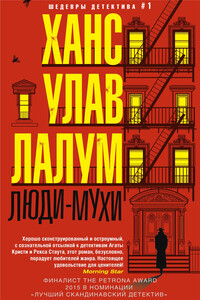
Убит бывший лидер норвежского Сопротивления и бывший член кабинета министров Харальд Олесен. Его тело обнаружено в запертой квартире, следов взлома нет, орудие убийства отсутствует. На звук выстрела к двери Олесена сбежались все соседи, но никого не увидели. Инспектор уголовного розыска Колбьёрн Кристиансен считает, что убийство, скорее всего, совершил кто-то из них. Более того, он полагает, что их показания лживы.
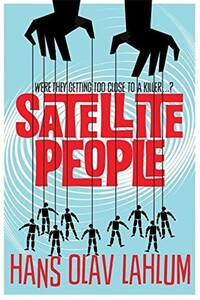
A gripping, evocative, and ingenious mystery which pays homage to Agatha Christie, Satellite People is the second Norwegian mystery in Hans Olav Lahlum's series. Oslo, 1969: When a wealthy man collapses and dies during a dinner party, Norwegian Police Inspector Kolbjorn Kristiansen, known as K2, is left shaken. For the victim, Magdalon Schelderup, a multimillionaire businessman and former resistance fighter, had contacted him only the day before, fearing for his life. It soon becomes clear that every one of Schelderup's 10 dinner guests is a suspect in the case.
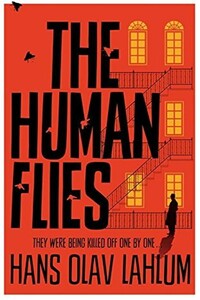
Oslo, 1968: ambitious young detective Inspector Kolbjorn Kristiansen is called to an apartment block, where a man has been found murdered. The victim, Harald Olesen, was a legendary hero of the Resistance during the Nazi occupation, and at first it is difficult to imagine who could have wanted him dead. But as Detective Inspector Kolbjorn Kristiansen (known as K2) begins to investigate, it seems clear that the murderer could only be one of Olesen's fellow tenants in the building. Soon, with the help of Patricia – a brilliant young woman confined to a wheelchair following a terrible accident – K2 will begin to untangle the web of lies surrounding Olesen's neighbors; each of whom, it seems, had their own reasons for wanting Olesen dead.
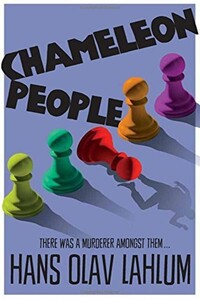
From the international bestselling author, Hans Olav Lahlum, comes Chameleon People, the fourth murder mystery in the K2 and Patricia series.1972. On a cold March morning the weekend peace is broken when a frantic young cyclist rings on Inspector Kolbjorn 'K2' Kristiansen's doorbell, desperate to speak to the detective.Compelled to help, K2 lets the boy inside, only to discover that he is being pursued by K2's colleagues in the Oslo police. A bloody knife is quickly found in the young man's pocket: a knife that matches the stab wounds of a politician murdered just a few streets away.The evidence seems clear-cut, and the arrest couldn't be easier.
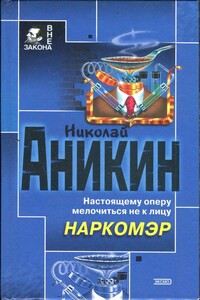
Тупик. Стена. Старый кирпич, обрывки паутины. А присмотреться — вроде следы вокруг. Может, отхожее место здесь, в глухом углу? Так нет, все чисто. Кто же сюда наведывается и зачем? И что охраняет тут охрана? Да вот эту стену и охраняет. Она, как выяснилось, с секретом: время от времени отъезжает в сторону. За ней цех. А в цеху производят под видом лекарства дурь. Полковник Кожемякин все это выведал. Но надо проникнуть внутрь и схватить за руку отравителей, наживающихся на здоровье собственного народа. А это будет потруднее…

«Посмотреть в послезавтра» – остросюжетный роман-триллер Надежды Молчадской, главная изюминка которого – атмосфера таинственности и нарастающая интрига.Девушка по имени Венера впадает в кому при загадочных обстоятельствах. Спецслужбы переправляют ее из закрытого городка Нигдельск в Москву в спецклинику, где известный ученый пытается понять, что явилось причиной ее состояния. Его исследования приводят к неожиданным результатам: он обнаруживает, что их связывает тайна из его прошлого.
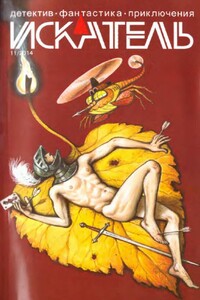
«ИСКАТЕЛЬ» — советский и российский литературный альманах. Издаётся с 1961 года. Публикует фантастические, приключенческие, детективные, военно-патриотические произведения, научно-популярные очерки и статьи. В 1961–1996 годах — литературное приложение к журналу «Вокруг света», с 1996 года — независимое издание.В 1961–1996 годах выходил шесть раз в год, в 1997–2002 годах — ежемесячно; с 2003 года выходит непериодически.Содержание:Анатолий Королев ПОЛИЦЕЙСКИЙ (повесть)Олег Быстров УКРАДИ МОЮ ЖИЗНЬ (окончание) (повесть)Владимир Лебедев ГОСТИ ИЗ НИОТКУДА.
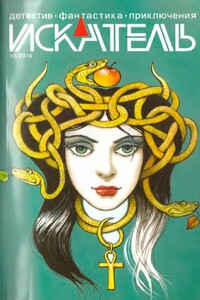
«ИСКАТЕЛЬ» — советский и российский литературный альманах. Издается с 1961 года. Публикует фантастические, приключенческие, детективные, военно-патриотические произведения, научно-популярные очерки и статьи. В 1961–1996 годах — литературное приложение к журналу «Вокруг света», с 1996 года — независимое издание.В 1961–1996 годах выходил шесть раз в год, в 1997–2002 годах — ежемесячно; с 2003 года выходит непериодически.Содержание:Олег Быстров УКРАДИ МОЮ ЖИЗНЬ (повесть);Петр Любестовский КЛЕТКА ДЛЯ НУТРИИ (повесть)
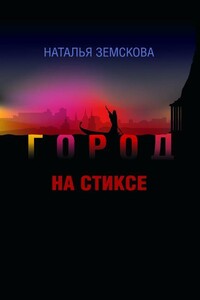
Наталья Земскова — журналист, театральный критик. В 2010 г. в издательстве «Астрель» (Санкт-Петербург) вышел её роман «Детородный возраст», который выдержал несколько переизданий. Остросюжетный роман «Город на Стиксе» — вторая книга писательницы. Молодая героиня, мечтает выйти замуж и уехать из забитого новостройками областного центра. Но вот у неё на глазах оживают тайны и легенды большого губернского города в центре России, судьбы талантливых людей, живущих рядом с нею. Роман «Город на Стиксе» — о выборе художника — провинция или столица? О том, чем рано или поздно приходится расплачиваться современному человеку, не верящему ни в Бога, ни в черта, а только в свой дар — за каждый неверный шаг.
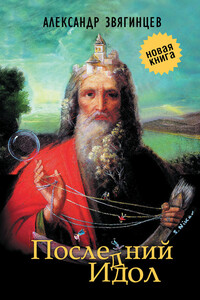
В сборник «Последний идол» вошли произведения Александра Звягинцева разных лет и разных жанров. Они объединены общей темой исторической памяти и личной ответственности человека в схватке со злом, которое порой предстает в самых неожиданных обличиях. Публикуются рассказы из циклов о делах следователей Багринцева и Северина, прокуроров Ольгина и Шип — уже известных читателям по сборнику Звягинцева «Кто-то из вас должен умереть!» (2012). Впервые увидит свет пьеса «Последний идол», а также цикл очерков писателя о событиях вокруг значительных фигур общественной и политической жизни России XIX–XX веков — от Петра Столыпина до Солженицына, от Александра Керенского до Льва Шейнина.